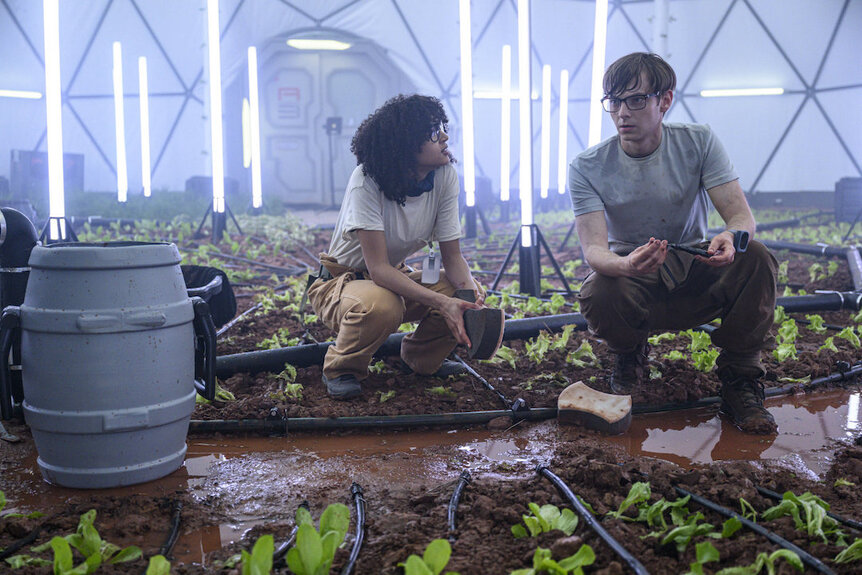Create a free profile to get unlimited access to exclusive videos, sweepstakes, and more!
NASA Volunteers Are Growing Real Food on a Fake Mars
A tasty dress rehearsal for a real Mars mission.
Before the crew of SYFY's The Ark (streaming now on Peacock!) stepped aboard the Ark One, they did years of preparation to make sure the trip would go as smoothly as possible. The plan was to slip into their stasis pods and nap their way to Proxima centauri, waking only once they arrived at their new planetary home. When they woke early with a damaged ship, only a partial crew, and a year left on the travelling clock, they had to get creative or starve.
When real-world astronauts finally make their way to Mars, they'll be up against similar challenges. The distance to Mars isn't quite as dramatic as Proxima centauri, but delivery times to the Red Planet are measured in months even at the best of times. If our intrepid explorers need anything on a short turnaround they're going to have to take it with them, or make it themselves on Mars.
Scientists are testing crop systems for Martian home cooking
Recently, four volunteers locked themselves in a sealed habitat for a year-long experimental Mars simulaton. The simulation is part of NASA's Crew Health and Performance Exploration Analog (CHAPEA) program, which aims to explore the crew health and perforance challenges inherrent in long-duration space missions. During the simulated mission, crew members of CHAPEA-1 will have to endure many of the same challenges waiting for astronauts on Mars including time delays in communication and absolutely no help from the outside world. Along with other scientific work, they'll be testing strategies and systems for growing food in a sealed environment, something astronauts on the red planet will likely need to do.
RELATED: NASA is Launching a Year-Long Simulated Mars Mission
At present, the food plan for a crewed Mars mission includes a combination of pre-packaged foods and shelf stable foods, but astronauts will also be growing food from scratch during the mission. While we might be able to deliver an astronaut's caloric needs in vacuum-sealed packages, having fresh plants on hand will provide additional nutrition and variety to their diets. Not to mention the psychological benefit of green spaces.
“We know that food choice becomes more important to crew with increasing mission duration, and it is important to understand how these restrictions relate to nutritional intake, health, and performance before we implement them on missions that require months for crew to return to Earth,” said NASA’s CHAPEA principal investigator Grace Douglas, in a statement.
The systems they are using inside the CHAPEA habitat are similar to commercially available home growing systems. They provide plants with water, nutrients, and light. This type of growing won't support all types of crops, but it can be used for small fruits and vegetables as well as herbs and leafy greens.
RELATED: Artificial Photosynthesis Could Help Astronauts Breathe on Mars
“Salad crop production may supplement the packaged meals, reduce menu fatigue, and provide a creative outlet for the crew to add a variety of fresh produce to their diet. Growing plants may also provide psychological benefits for astronauts living in isolated, confined environments away from Earth, and we hope to capture data on both of these aspects," said Gioia Massa, crop production team lead for CHAPEA.
More than the addition to the menu — we'll certainly send enough food to sustain the crew even if all the crops fail — there's a certain satisfaction that comes with eating something you grew from the dirt, perhaps especially if that dirt has a reddish hue.
Catch The Ark, streaming now on Peacock!



































